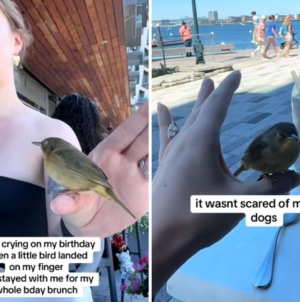-
Woman Starts Crying on Birthday, Then Wild Bird Comforts Her: ‘So Special’ - 3 mins ago
-
Oil Price Jumps on Trump’s Russia Sanctions - 4 mins ago
-
California judge orders UC to disclose Trump UCLA settlement proposal - 36 mins ago
-
Tears Over 14-Year-Old Dog in Shelter ‘All Dressed Up With Nowhere To Go’ – Newsweek - 38 mins ago
-
Drug-Smuggling Submarines on Display at Latin American Naval Base - 48 mins ago
-
Phillies Could Dump Alec Bohm to AL West Team, per Insider - about 1 hour ago
-
Commentary: Sanctuary policies and activists aren’t endangering lives during ICE raids — ICE is - about 1 hour ago
-
Harvard Records an Increase in Asian Students and a Drop in Black Students - 2 hours ago
-
Several Contenders Worth Watching in Cody Bellinger Free Agency Chase - 2 hours ago
-
He tracked and posted videos of ICE raids in L.A. Now this TikTok streamer is in federal custody - 2 hours ago
Scientists Re-Ignite the Spark That Led to Complex Life
Researchers have taken an important step in understanding the origins of complex life by recreating the beginnings of endosymbiosis—a phenomenon in which one organism lives inside another—in a laboratory setting.
The findings, published in Nature, reveal how this intricate partnership might begin and eventually stabilize.
By using fungi and bacteria as model organisms, the study sheds new light on the evolution of these delicate relationships, offering a glimpse into the ancient processes that led to the development of cellular powerhouses like mitochondria, which drive the energy systems of our cells.

Sean Kilian
Why It Matters
Endosymbiosis is the foundation of complex, multicellular life as we know it, giving rise to the mitochondria and chloroplasts that power cells in plants, animals and fungi.
Understanding how this process begins could unlock answers about the evolution of life on Earth that led to everything from trees to birds to us, as well as inform bioengineering breakthroughs.
The study’s implications stretch from evolutionary biology to potential applications in medicine, agriculture and biotechnology, where harnessing symbiotic relationships might drive innovation.
What to Know
The study used the fungus Rhizopus microsporus—a fungal pathogen that infects maze and sunflower crops—and injected it with two types of bacteria: E. coli and Mycetohabitans.
While E. coli was ultimately rejected by the fungus, the Mycetohabitans bacteria successfully entered fungal spores and were passed to subsequent generations.
However, this initial cohabitation came at a cost: the fungi with bacterial residents grew slower than uninhabited fungi.
Over successive generations, though, the fungi adapted to their bacterial partners, recovering their fitness and even gaining advantages, such as enhanced nutrient acquisition and defense against predators.
These experiments show just how delicate the early stages of endosymbiosis are—the initial disadvantage to the host could have led to an unsuccessful match under natural conditions.
What People Are Saying
Gabriel Giger, lead author of the study, said in a statement: “The fact that the bacteria are actually transmitted to the next generation of fungi via the spores was a breakthrough in our research.”
Julia Vorholt, a professor of microbiology at ETH Zurich and corresponding author of the study, said in the statement: “The fact that the host’s fitness initially declines could mean the early demise of such a system under natural conditions. For new endosymbioses to arise and stabilize, there needs to be an advantage to living together.”
“In evolution, endosymbioses have shown how successful they ultimately can become.”
What Happens Next
While this bacterium-fungus pairing offers valuable insights, it represents just one example of a process that may vary widely across different systems. Future research will explore a broader range of endosymbiotic relationships to identify which mechanisms are universal and which are unique to specific organisms.
These studies could ultimately lead to a new frontier in synthetic biology: engineering bacteria to perform specialized functions and introducing them into host organisms to create lab-grown endosymbiotic systems.
This approach could offer an alternative to traditional genetic editing, enabling the development of novel traits through symbiotic partnerships.
Do you have a tip on a science story that Newsweek should be covering? Do you have a question about endosymbiosis? Let us know via science@newsweek.com.
Reference
Giger, G. H., Ernst, C., Richter, I., Gassler, T., Field, C. M., Sintsova, A., Kiefer, P., Gäbelein, C. G., Guillaume–Gentil, O., Scherlach, K., Bortfeld-Miller, M., Zambelli, T., Sunagawa, S., Künzler, M., Hertweck, C., & Vorholt, J. A. (2024). Inducing novel endosymbioses by implanting bacteria in fungi. Nature, 635(8038), 415–422. https://doi.org/10.1038/s41586-024-08010-x
Source link



















